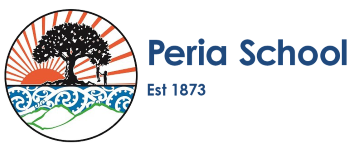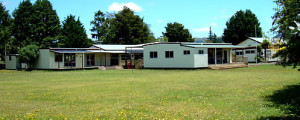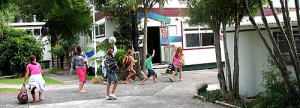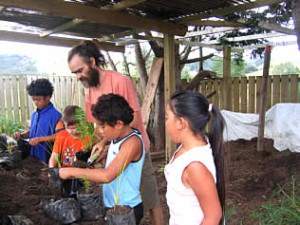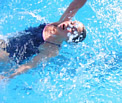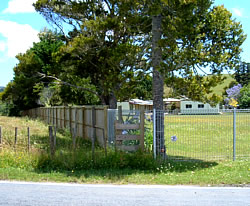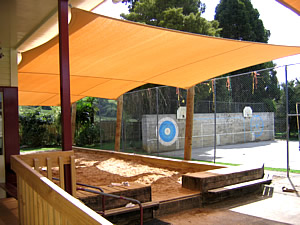(1) School Hours – Bell Times
Bell times at Peria School are as follows:-
8.30am School commences
10.15am Interval starts
10.35am Interval ends
12.15pm Lunch break starts
1.00pm Lunch break ends
2.25pm School finishes
Hours of Responsibility: The school is responsible for supervision during school day only from 7.35 am-3.00 pm Monday to Friday. Outside of these hours pupils and families are welcome to use school facilities such as the playground and the swimming pool but we request that you provide the necessary supervision to help ensure the safety of our children.
(2) School Rooms and Classes
We have three classrooms as follows:
| Classroom Name | Teacher | Year Groups |
| Te Puna | Jarrod McClay | Year 1 to 2 |
| Te Awa | Lou Hungar | Year 3 to 5 |
| Te Rangi | Yvonne Wihongi | Year 6 to 8 |
(3) School Bus Runs
We have four bus runs at Peria School which are as follows:-
(a) Kaiaka: Arrives at 7.35 a.m., departs at 2.30 p.m.
(b) Honeymoon Valley: Arrives at 8.10 a.m., departs at 2.30 p.m.
(c) Fern Flat: Arrives at 8.00 a.m., departs at 2.55 p.m.
(d) Taipa/ Oruru Rd Arrives at 8.20 a.m., departs at 2.55 p.m.
All children put their bags and belongings in bus lines after school. The duty teacher checks off the bus roll then the children depart.
We encourage parents and caregivers to visit, and to be a part of our school culture. Parents should inform teachers if they wish to visit or observe in the classroom during school hours. We also ask parents in to help when undertaking specific educational programmes.
(5) Communication with the School
Peria School supports open and honest dialogue. If parents have any concerns or queries we would like to deal with them rather than waiting. If you would like to see a teacher or the Principal please ring and make an appointment. The school has a complaints policy available at the office which people are welcome to use. We encourage parents to ask if they are unsure of anything or would like information about teaching practices or programmes.
At Peria we formally report to parents on students’ progress three times each year.
First is the Settling in report which concentrates on attitudes, behaviour, self-management and social and cooperative skills. A large portion of this report is the children’s own words.
The second report goes home near the end of the second term and reports on academic progress along with additional comments relating to attitudes, behaviour, self-management and social and cooperative skills. It is followed up with parent – child – teacher interviews.
At the end of the final term students receive end of year reports which attempt to summarise their child’s overall achievements for the year. These reports are made available the same day as our final assembly so parents have the option to chat to classroom teachers as well.
(7) Newsletters
The school puts out a regular newsletter every second Friday, which details items of news and forthcoming events. This newsletter is given to the eldest in each family and extra copies are kept in the school office. Parents may put community news in the newsletter. Individual teachers also put out class newsletters when the need arises. We also have an ever-growing list of those who prefer to receive their newsletter by email, including friends of the school. Please feel free to contact us to add your details to our list.
(8) Absences
Parents should phone the school or send a note if their child is to be absent. The Principal should be informed if children are away on a regular basis or for any extended period. We operate an on-line attendance system where unknown absentees are followed up with a phone call home. The Principal carries out attendance reviews throughout the year and if there are concerns, you will always be contacted in the first instance. Cases are looked at on an individual basis however sometimes the Truancy Service will be contacted.
(9) Technology
All Year 7 and Year 8 children travel to Kaitaia Intermediate by bus each fortnight for Technology Education on a Friday morning. All children must wear shoes to Technology and a specific fee is charged to cover expenses. The children return to us at lunch time.
(10) Lost Property
Lost property items are regularly displayed on the area outside Room 2 and sometimes at school assemblies. If it is not claimed within one month, it is given away or disposed of. All lost property is kept in baskets in the PE Shed.
Peria School is smoke free at all times and no smoking is allowed in the buildings or the school grounds. Our smoking policy is displayed in the foyer of the office. People who work at school and wish to smoke must leave the school grounds.
(12) School Policies
Our school has formulated a variety of policies and procedures. These can be viewed by teachers, parents and caregivers at any time and are available from the office. All policies are approved by the Board of Trustees and give clear guidelines to all people involved in the School.
(13) Stationery
FREE STATIONERY FOR 2018!!! All stationery needed by the pupils of our school is available through the office at competitive rates. Teachers send out stationery lists at the beginning of each year and pupils may restock whenever the need arises.
(14) Lunches
Children may order a variety of lunches at school. Children need to order their lunches before school from the office. An updated lunch list is published in the school newsletter and is available from the school office. We endeavour to make school lunches as nutritious as we can.
(15) School Evacuation
Evacuation routes are posted inside each building and all classrooms of the school. The emergency evacuation signal is continuous ringing of the alarm. Teachers are to take rolls and accompany their class to the designated muster area. In the case of an earthquake, all children are to remain under their desks until the all clear is given.
When enrolling children, all parents should note any medical problems or health concerns. These should be updated when needed. A list of children with allergies or medical problems is on the wall in the First Aid/Sick Bay room. Teachers on duty are in charge of first aid and any serious concerns will be noted in the First Aid Register. Parents will be contacted immediately if the problem is serious. Staff dealing with blood must wear the protective gloves provided.
(17) Visiting Performers
We ask our parents for a contribution to cover the cost when we have a Visiting Performer. We endeavour to have three performances per year and are mostly held in the school library. Parents are usually invited.
(18) Disposal of Rubbish
Being an environmentally aware school, we dispose of rubbish in three ways. All classrooms and the staffroom have containers for each of these types of rubbish which are:-
(a) Paper – taken to the dump or used on our worm farm.
(b) Food scraps – taken away by the cleaners.
(c) Inorganic matter, sorted and taken to the dump for recycling where appropriate.
We are bound by this Act and cannot give information on children to any person except their parents or caregivers. We also cannot give out phone numbers or addresses to people ringing the school looking for information.
(20) School Charter
This is the document, which sets out the school’s obligations and is an agreement between the Board of Trustees and the Ministry of Education. The charter was reviewed in 2014 after community consultation. It is on display in the entrance of the school office.
Link to School Charter Link to School Annual Report Link to School’s latest ERO report
(21) Playground Rules
Respect yourself, others and our environment.
(22) School Discipline
There is a specific policy on this matter but in brief, all children are expected to follow certain expectations and our code of conduct while at school. There will be no tolerance of bullying or swearing at Peria School. We have a positive approach to discipline that rewards good behaviour in the first instance. Those children who display inappropriate behaviour will first be warned by the class teacher. If the behaviour continues, they may need to speak to the Principal or be given time out. Parents will be notified if this happens.
(23) Support Staff
We have a full compliment of support staff at our school. At present we have two general teacher aides. The teacher aides have set timetables that are reviewed regularly according to the needs of the children and staff. We also employ two cleaners, a groundsperson, a swimming pool attendant, and a school secretary for four mornings per week and a payroll administrator.
Don’t forget to send your children to school prepared:-
- Plenty of sleep. We can’t work with children who have watched too much television or stayed up late – ten hours sleep for primary children is recommended.
- To be well fed! Children can’t learn who do not have a balanced diet with regular meal times – breakfast is essential before a six-hour school day. Children need both mid-morning and lunchtime food and drinks.
- To be secure. Peria pupils come from caring homes. However, children need reassurance and to have realistic expectations from their parents.
- To have a positive attitude. If children expect good things to happen at school in all areas of learning they will have a keen and sparkling approach to their day. Don’t dull this with your worries, fears and niggles!
- To have the correct gear. Comfortable working clothes, stationery, lunch, library books and swimming togs. Don’t let children ring you to bring things – we encourage independence and self-organisation.
- To be on time. Social things happen before school and teachers give out information for the day at 8.30am. Children who come late are at a disadvantage. They are not ready for the days learning and playing.
- To listen to your children’s reading & spelling each night. To support your children with any homework tasks.
- To discourage bringing toys or other valuables to school.
(25) Procedure for the Online/Newspaper Publication of Student Images and Work
Authorisation covering the entire period of enrolment for each student from their legal guardian shall be obtained at the time of enrolment.
A student’s image or work will not be published without this authorisation from the student’s legal guardian. Peria School will immediately remove all material relating to a student from a website if requested by a legal guardian of the student, or the student themselves, and in any event, once the student leaves Peria School permanently.
Peria School will publish student material online for the following three main purposes:
- To educate the student in accordance with the national curriculum, including the role and use of technology in society
- To encourage our students to be part of, and participate in, our school community.
- To promote our school in the wider community
- Students may be identified by their first name and year at school on the website or newspaper. Students’ surnames, home addresses and telephone numbers will not be available on our website.
- Passwords and User ID’s required for maintaining the site shall be carefully guarded to ensure that only authorised personnel have the opportunity to make changes to our website.
- Peria School will have a designated Privacy Officer (The Principal) who is available to answer any queries from students or parents about the operation of this procedure.
Peria School Online Parent Permission Form
(26) Complaints
- If a parent/caregiver wishes to discuss some aspect of the classroom program or a child’s progress they should, in the first instance, approach the classroom teacher for an appointment.
- If the meeting with the class teacher is not satisfactory the parent/caregiver can request a meeting with the Principal. The Principal will liaise with the parent/caregiver and teacher concerned, separately, and then will bring both parties together for a meeting if necessary. The Principal may request the support of another staff member if it is felt necessary.
- If this meeting does not satisfy the parent/caregiver, the complaint should be put in writing and addressed to the Chairperson of the Board of Trustees and such complaint will go before a full Board of Trustees In-Committee meeting.
- Those making complaints and those having complaints made against them will be informed of the Board’s investigation/action.
- Teachers may be approached at any time during the school day, for an appointment when they are not teaching in the classroom, i.e. play times, lunchtimes and after school.
- Concerns and/or complaints regarding Support Staff, Board of Trustee members and Parents/Caregivers should be addressed to that person in the first instance. If the outcome is not satisfactory then the complaint should be put in writing and addressed to the Chairperson of the Board of Trustees.
2018 Child Protection Policy
This policy outlines the board’s commitment to child protection and recognises the important role and responsibility of all our staff in the protection of children. It includes the board’s expectations when child abuse is reported or suspected by us. All staff members (including contractors and volunteers) are expected to be familiar with this policy, its associated procedures and protocols and abide by them.
The board of trustees has an obligation to ensure the well being of children in our care so they thrive, belong and achieve. We are committed to the prevention of child abuse and neglect and to the protection of all children. The safety and well being of the child is our top priority. Advice will be sought through appropriate agencies in all cases of suspected or alleged abuse.
In line with section 15 of the Children, Young Person and Their Families Act, any person in our school/kura who believes that any child or young person has been, or is likely to be, harmed (whether physically, emotionally, or sexually) ill-treated, abused, neglected, or deprived must follow school procedures and may also report the matter to a social worker or the local police.
Although ultimate accountability sits with the board, the board delegates responsibility to the principal to ensure that all child safety procedures are implemented and available to all staff, contractors, volunteers and parents. Therefore, the principal will be the official Designated Person for Child Protection and must:
- Develop appropriate procedures to meet child safety requirements as required and appropriate to the school
- Comply with relevant legislative requirements and responsibilities
- Make this policy available on the school’s internet site or available on request
- Ensure that every contract, or funding arrangement, that the school enters into requires the adoption of child protection policies where required
- Ensure the interests and protection of the child are paramount in all circumstances
- Recognise the rights of family/whanau to participate in the decision-making about their children
- Ensure that all staff are able to identify the signs and symptoms of potential abuse and neglect, deal with disclosures by children and allegations against staff members and are able to take appropriate action in response
- Support all staff to work in accordance with this policy, to work with partner agencies and organisations to ensure child protection policies and procedures are understood and implemented
- Promote a culture where staff feel confident they can constructively challenge poor practice or raise issues of concern without fear of reprisal
- Consult, discuss and share relevant information, in line with our commitment to confidentiality and information sharing protocols, in a timely way regarding any concerns about an individual child with the board or designated person
- Seek advice as necessary from NZSTA advisors on employment matters and other relevant agencies where child safety issues arise
- Make available professional development, resources and/or advice to ensure all staff can carry out their roles in terms of this policy
- Ensure that this policy forms part of the initial staff induction programme for each staff member
Review schedule: Within 3 years
Related documentation and information
- Further information including frequently asked questions (FAQ’s) are available on the NZSTA website nzsta.org.nz
- Ministry of Education website education.govt.nz
- Vulnerable Children Act 2014
- Further information and sample child protection templates are available in the Children’s Action Plan guideline Safer Organisations, Safer Children: http://www.childrensactionplan.govt.nz/assets/CAP-Uploads/childrens-workforce/Safer-Organisations-safer-children.pdf
PROCEDURES FOR IMPLEMENTATION OF CHILD PROTECTION POLICY
Definitions
Child abuse refers to the harming (whether physically, emotionally or sexually), ill treatment, abuse,
neglect, or serious deprivation of any child/tamariki, young person/rangatahi (Section 14B Children,
Young Persons, and Their Families Act 1989).
This includes actual, potential and suspected abuse.
Physical abuse – any acts that may result in physical harm of a child or young person. It can be, but is not limited to: bruising, cutting, hitting, beating, biting, burning, causing abrasions, strangulation, suffocation, drowning, poisoning and fabricated or induced illness.
Sexual abuse – any acts that involve forcing or enticing a child to take part in sexual activities, whether or not they are aware of what is happening. Sexual abuse can be
- contact abuse or
- non-contact abuse such as exhibitionism, voyeurism, exposure to pornographic or sexual imagery, inappropriate photography or depictions of sexual or suggestive behaviours or comments.
Emotional abuse – any act or omission that results in adverse or impaired psychological, social, intellectual and emotional functioning or development. This can include:
- Patterns of isolation, degradation, constant criticism or negative comparison to others. Isolating, corrupting, exploiting or terrorising a child can also be emotional abuse.
- Exposure to family/whānau or intimate partner violence.
Neglect – neglect is the most common form of abuse and although the effects may not be as
obvious as physical abuse, it is just as serious. Neglect can be:
- Physical (not providing the necessities of life like a warm place, food and clothing).
- Emotional (not providing comfort, attention and love).
- Neglectful supervision (leaving children without someone safe looking after them).
- Medical neglect (not taking care of health needs).
- Educational neglect (allowing chronic truancy, failure to enrol in education or inattention to education needs).
Family violence is defined in Te Rito, the NZ Family Violence Prevention Strategy, as covering a broad range of controlling behaviours, commonly of a physical, sexual and/or psychological nature that typically involve fear, intimidation or emotional deprivation. It occurs within a variety of close interpersonal relationships, such as between partners, parents and children, siblings, and in other relationships where significant others are not part of the physical household but are part of the family and/or are fulfilling the function of family.
Identifying possible abuse or neglect
Information on identifying possible abuse or neglect is detailed in ‘Working together to keep children and young people safe. An Interagency Guide’ (Child, Youth and Family, 2011, (Working Together)).
This document should be read in conjunction with this policy.
For the online information about identifying child abuse in this publication go to: http://www.cyf.govt.nz/documents/about-us/publications/27713-working-together-3-0-45ppi.pdf
To download the Child, Youth and Family ‘Signs of abuse and neglect’ chart
Our approach to identifying abuse or neglect is guided by the following principles:
- We understand that every situation is different and it’s important to consider all available
information about the child and their environment before reaching conclusions. For example,
behavioural concerns may be the result of life events, such as divorce, accidental injury, the
arrival of a new sibling etc. - We understand when we are concerned a child is showing signs of potential abuse or neglect
we should talk to someone, either a colleague, manager/supervisor or the Designated Person
for Child Protection – we shouldn’t act alone. - While there are different definitions of abuse, the important thing is for us to consider overall
wellbeing and the risk of harm to the child. It is not so important to be able to categorise the
type of abuse or neglect. - It is normal for us to feel uncertain, however, the important thing is that we should be able to
recognise when something is wrong, especially if we notice a pattern forming or several signs
that make us concerned. - Exposure to intimate partner violence (IPV) is a form of child abuse. There is a high rate of co occurrence between IPV and the physical abuse of children. There is also a correlation between animal abuse and child abuse.
We recognise the signs of potential abuse:
- Physical signs (e.g., unexplained injuries, burns, fractures, unusual or excessive itching, genital injuries, sexually transmitted diseases).
- Developmental delays (e.g., small for theirage, cognitive delays, falling behind in school, poor speech and social skills).
- Emotional abuse/neglect (e.g., sleep problems, low self-esteem, obsessive behaviour, inability to cope in social situations, sadness/loneliness and evidence of self-harm).
- Behavioural concerns (e.g., age inappropriate sexual interest or play, fear of a certain person or place, eating disorders/substance abuse, disengagement/neediness, aggression).
- The child talking about things that indicate abuse (sometimes called an allegation or disclosure).
We are aware of the signs of potential neglect:
- Physical signs (e.g., looking rough and uncared for, dirty, without appropriate clothing, underweight).
- Developmental delays (e.g., small for their age, cognitive delays, falling behind in school, poor speech and social skills).
- Emotional abuse/neglect (e.g., sleep problems, low self-esteem, obsessive behaviour, inability to cope in social
situations, sadness/loneliness and evidence of self-harm). - Behavioural concerns (e.g., disengagement/neediness, eating disorders/substance abuse, aggression).
- Neglectful supervision (e.g., out and about unsupervised, left alone, no safe home to return to).
- Medical neglect (e.g., persistent nappy rash or skin disorders or other untreated medical issues).
Responding to suspected abuse or neglect
In all cases where a member of staff has a concern about a child/tamariki/young person/rangatahi
being or likely to be abused or neglected (refer to Definitions) by an adult or another child/tamariki or
young person/rangatahi, they will report this to their manager/supervisor and make referrals/notify key
staff to assist in the formulation of a plan to address the care and protection concerns.
A referral to Child, Youth and Family may be made at any time.
It is mandatory for all concerns to be reported/referred to the Child Protection Coordinator within a time
period which allows for effective consultation/advice to be given.
Our organisation recognises that in some cases the involvement of statutory agencies would be inappropriate and potentially harmful to families/whānau. Throughout New Zealand statutory and non-statutory agencies provide a network of mutually supportive services and it is important for our organisation to work with these to respond to the needs of vulnerable children and families/whānau in a manner proportionate to the level of need and risk. Contact details for agencies and services in our community are provided as an appendix to this procedure.
Responding to a child when the child discloses abuse
When we respond to suspected child abuse or any concerning behaviour we write down our observations, impressions and communications in a confidential register. This is kept separate from our other records and access will be strictly controlled.
Allegations or concerns about staff
All matters involving allegations against staff need to be reported to the Designated Person for Child Protection. If the allegation was regarding the Designated Person for Child Protection then the Chairperson of the Board of Trustees would be reported to.
To ensure the child is kept safe, management may take steps to remove the staff member against
whom an allegation has been made from the environment, subject to the requirements of the
applicable individual or collective employment contract and relevant employment law, including the
Human Resources disciplinary procedures.
Management will consult with Child, Youth and Family and/or the Police before taking any further
actions.
Our organisation commits not to use ‘settlement agreements’, where these are contrary to a culture of
child protection. Some settlement agreements allow a member of staff to agree to resign provided that
no disciplinary action is taken, and a future reference is agreed. Where the conduct at issue concern
the safety or wellbeing of a child, use of such agreements is contrary to a culture of child protection.
Confidentiality and information sharing
All observations, after an investigation has been notified, shall be kept in writing but the file will be
sealed for confidential reasons.
We will seek advice from Child, Youth and Family and/or the Police before identifying information
about an allegation is shared with anyone, e.g other agencies or services. Staff should be aware that:
- Under sections 15 and 16 of the Children, Young Persons, and Their Families Act 1989 any person who believes that a child has been or is likely to be, harmed physically, emotionally or sexually or ill-treated, abused, neglected or deprived may report the matter to Child, Youth and Family or the Police and provided the report is made in good faith, no civil, criminal or disciplinary proceedings may be brought against them.
- When collecting personal information about individuals, it is important to be aware of the requirements of the privacy principles – i.e., the need to collect the information directly from the individual concerned and when doing so to be transparent about: the purposes for collecting the information and how it will be used; who can see the information; where it is held; what is compulsory/voluntary information; and that people have a right to request access to and
correction of their information.
- Staff may, however, disclose information under the Privacy Act/Health Information Privacy Code where there is good reason to do so – such as where there is a serious risk to individual health and safety (see privacy principle 11/Code rule 11).
Child safe practice guidelines
To avoid situations where staff may be alone with children, all staff should examine the opportunities or
possible situations where staff may be alone with children. Wherever possible an open door policy for
all spaces should be used (excludes toilets). Staff should be aware of where all children are at all
times.
Visitors should be monitored at all times by staff and volunteers and outside instructors should be
monitored by staff.
If activities require one to one physical contact (i.e., classes in swimming, gymnastics etc.) parents and
caregivers should be advised.
Where a child or young person requires assistance, e.g., if they are intellectually or physically disabled,
if possible involve the parents/caregivers and outside agencies (in education such as the Ministry of
Education’s Special Education group) to assist. If this assistance is not available, ensure that the staff
members are aware of the appropriate procedures when giving assistance
Staff should avoid being alone when transporting a child or young person, unless an emergency
requires it. Except in an emergency, children and young people are not to be taken from our
organisation’s premises, or from the programme we provide, without written parental consent
Also could consider communicating with children esp by phone,email etc, gift giving, safe restraint practices, any other high risk situations
Training, supervision and support
Training, resources and/or advice will be available to ensure that all staff can carry out their roles in
terms of this policy, particularly:
- Understanding child abuse and indicators of child abuse.
- How to reduce the risk of child abuse.
- Understanding and complying with legal obligations in regard to child abuse.
- Working with outside agencies on child abuse issues.
- Planning of environment and supervision to minimise risk.
- Dealing with child/parents/family/whānau.
This policy will be part of the initial staff induction programme.
Related documentation and review
These procedures will be reviewed at least every three years and shall include a formal consultation process with staff.
This policy links to: (possibly)
Privacy Act 1993 Procedure
Police Vetting Procedure
First Aid/Sick Bay Procedure
Open Door Practice
Non Custodial Parents Procedure
Drugs Procedure
Guidance for Staff on their relationships with Students (and Guidance for Students) Procedures
Police Vetting Procedure
